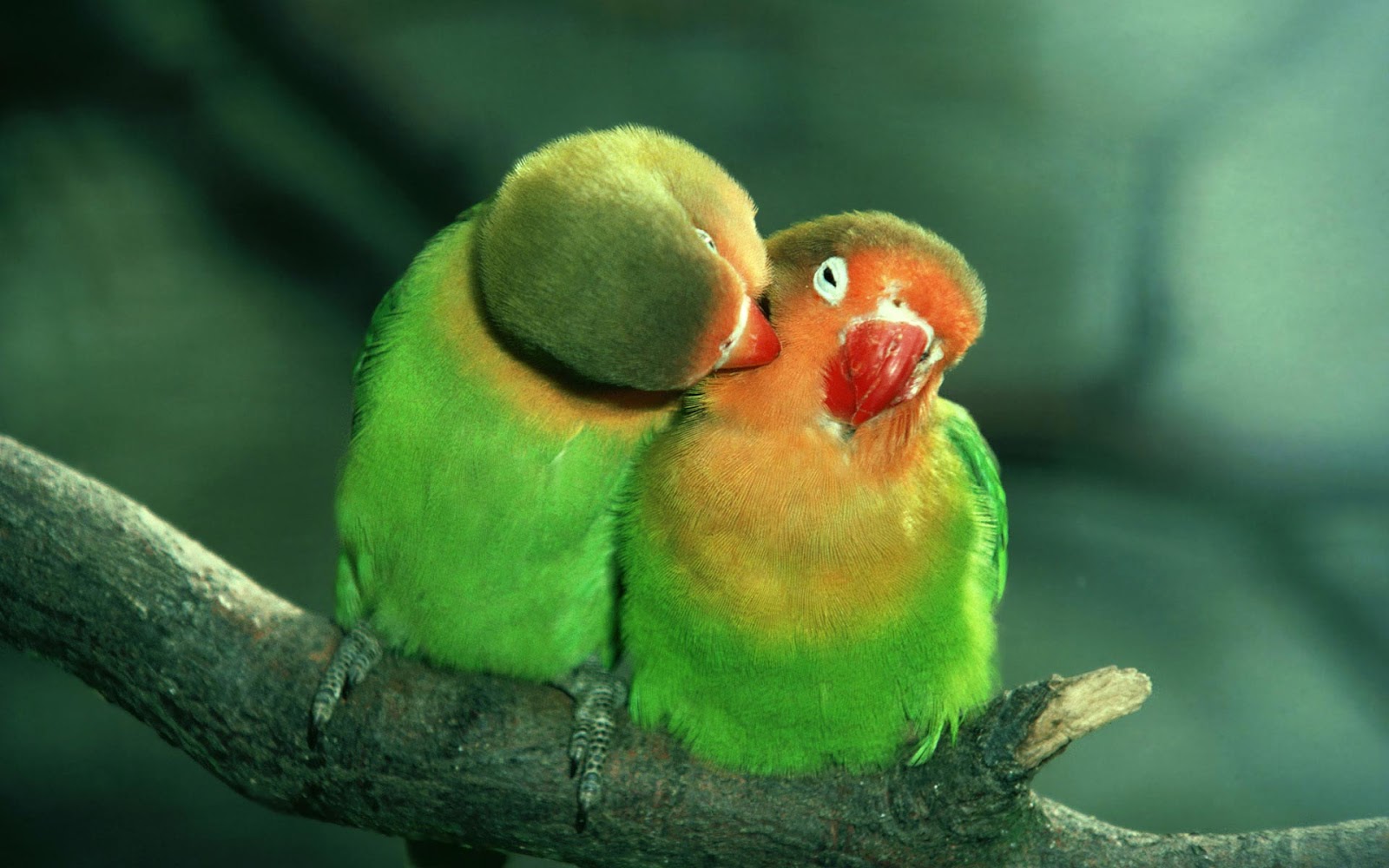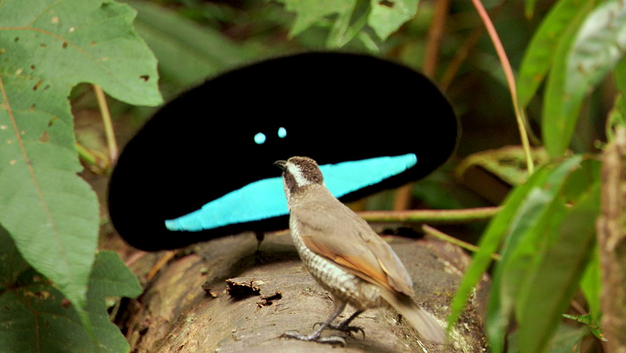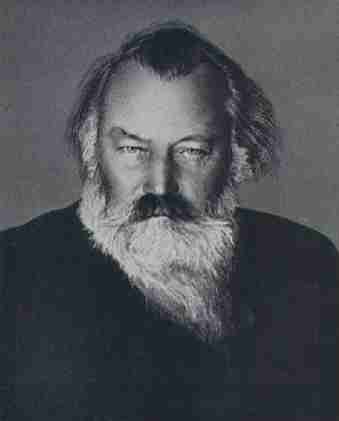The beginning of a new era for sound and music. Enjoy.
-B
*Conducted by Joe Duddell
*Performed live at MediaCity in Salford.

The beginning of a new era for sound and music. Enjoy.
-B
*Conducted by Joe Duddell
*Performed live at MediaCity in Salford.

It’s a sound we take for granted – the bird call. A seemingly mundane and detached part our world, bird calls (or songs) could actually be the answer to an extraordinary question… Are we alone in the universe?
It is understood that almost all, if not all, animals communicate in some form or another but the depth of their communication is still largely unknown. Let’s take birds for example…

We are all accustomed to birdcalls. City dwellers accustom their ears to the pigeons and crows, subburians wake up to the calls of bluejays and hummingbirds and in the forest, a symphony of sounds some short (the owl), some percussion (the woodpecker) and some melodic and (the common robin or the lark) ring out against the trees trunks.
Like humans, birds learn to communicate, from birth using the mechanics and vibrations granted to them by nature. These typically take the form of a large air sacks, which then the bird, using its own individual technique, composes a song to convey a message.

And while their messages usually function as alerts, calls and courtships it is important to remember how little we know about the animal kingdom and what messages they may truly be communicating.
Just remember, that birds and their amazing acoustical abilities have shaped our own consciousness for thousands of years, including some of the great composers.
The scales, trills and runs found in Mozart’s symphonies are easily found when listening to birds in nature.
The notion that birds have shaped and even guided classical music is not so far fetched when taking into consideration the degree to which these geniuses were immersed in nature.
Mozart would have awoke in the morning to an orchestra birds outside his window. The sound would have been impossible for composers to escape thus many classical pieces utilizes the sound of the orchestra and piano to emulate birds.

Bird of Paradise performing a mating dance
There is a reason that their highly advanced communication intrigues us, it’s because we can recognize, as musicians, their aural capabilities and complexities. Bird melodies and rhythms are far more sophisticated than our greatest composer’s compositions. Even the complex rhythms found in modern dubstep, which utilizes very complex rhythmic patterns, don’t come close to that of a song bird. It is proof that some creatures still have us beat in a realm we thought we had dominion over; music.

It is important to respect the other musical beings vibrating out in nature. There are many more out there and each one, including us, uses there body in a physical manner so as to produce a signature vibration uniquely their own. When a male bird courts a female he must put on the most beautiful dance and sing the most beautiful song and that is how he wins her heart, through creation and creativity.
Nature is a creative network and their is no lack of vibrational energy or creativity in the animal kingdom. Birds inspire us with their amazing vibrational capabilities; Sing, shine and fly as their colors light up the forest.
Nothing brings a human joy like the sound of two birds echoing off the hallow tree trunks. The path is never wrong when the birds are chirping.
So next time you hear a piccolo or a flute, thank the birds because it’s the sounds of nature that inspire us humans to emulate it’s voice through our musical instruments.
Thank you birds!
-B

This is an incredibly powerful crystal bowl meditation. Please find a dark room or a comfortable setting, put headphones on and give this a listen. Simply five minutes to unwind is all you need.
These bowls are molded from melted down pure quartz crystal and are played by simply circling the top of of the bowl with a wooden mallet and rubber tip.

*The second most abundant mineral on earth. Made of Silicon and oxygen.
*A six-sided prism with six pyramids at each end.
*With piezoelectric properties – quartz crystal is a powerful conductor of electricity.
*The quartz crystal oscillator – developed 1926 – used to control the frequency of radio broadcasting stations.

cymatic pentagon
*Now we use synthetic quartz crystal grown by – Hydrothermal synthesis.
*Our electronic grid no longer utilizes the planets most powerful source of energy.
*A natural energy source guided by frequencies.
*The quartz crystals are manufactured for frequencies from a few tens of kilohertz to tens of megahertz.
*They were created by and controlled by corporations like Bell Laboratories, AT&T and Vectron International.

*Vectron International is a world leader in the design, manufacture and marketing of Frequency Control, Sensor, and Hybrid Product solutions (quartz crystal oscillators) – ranging from DC to microwave frequencies.

Vectron International
*Vectron is also the leader in distributing and designing synthetic quartz crystal oscillators.
*Vectron specializes in —
Wireless – Military – Space – Wireline
*Vectron controls the vibration grid through precisely controlled frequencies all while using synthesized quartz crystal grown by Hydrothermal synthesis.

cellphone towers
If we are vibrating, kinetic energetic beings of light that palpitate and re-calibrate according to the environment around us – Perhaps we should take into consideration the unseen frequency grid that surrounding us everyday. X-ray, microwave, radio wave and infrared.
*Microwaves – most prevalent – used in cell phone communication, radar and satellite technology. They are the second lowest vibrating frequency.
*Radio waves – lowest in vibration – used in wireless technology and communication.
-However-

Quartz crystal
*We could be using the second most abundant mineral on earth.
A super-charged source of vibrational power.
Nature’s conductor of electricity.
Frozen light.
Raw and unsynthesized
A beautiful resonance enhancer.
The future of vibration liberation and sound technology.

Quartz crystal.
It’s up to us.
-B
This video by Smalin beautifully breaks down the second movement to Beethoven’s Seventh Symphony by visually representing each individual instrument. This visual depiction gives us the unique opportunity to literally watch a complex piece of classical music bringing great clarity and focus to the abstract dance of sound.
Enjoy the music.
-B
Forgive the rough footage in this video, the evidence shown is simply is amazing.
The man uses cornstarch and soundboards (plates, diaphragms, or membranes) to capture physical changes to the cornstarch under the influence of certain frequencies.
Notice the beautiful and symmetrical patterns the cornstarch produces when influenced by the A432hz frequency. The pattern grows and evolves becoming more complex as the frequency raises it’s vibration.
Notice the similarities between the cornstarch and other natural occurrences like cellular division, birthing stages and weather patterns, as well as corporate and ancient symbolism.
The scientific process being used in this video is called Cynmatics. Cynmatics is the study of the periodic effects sound and vibration have on matter.
It is one of the most important fields of study today.
I will be posting more information about cynmatics as my blog unfolds, in the meantime, enjoy the video.
-B

So… Classical music… What the hell happened?
Where did the 500 years of musical imagination predating pop music vanish off to?
It’s funny how little people think about, remember or care for classical music these days. I think most would find it hard to name or recall a single classical piece. Beethoven… Which one was he? He was the deaf one, right? No he was the one that went crazy…?
I’ll help you out… All of them went crazy, Beethoven was the deaf one… And this is Bach…

Classical music isn’t as complex or dated as it seems to be. Just because the men (and they were mostly men) are only known through oil paintings and handwritten letters doesn’t mean they are not still relevant.
Classical music is simply music and as music it will always be relevant. So long as there is emotion and beauty in the sound than nothing else matters.
Currently there is too much hype in music. Too much money. For example…

Puff Daddy, Sean Combs, Sean “Puffy” Combs, Diddy
…I mean, his pour is amazing… But…
Music should always be about the moment; The sound; The emotional impact. If vibration is the electrical current of the universe than it is true… Music moves us. It puts us in motion.
Emotion.
If all the supernatural, metaphysical power of music proves to be true than what does that mean about the centuries of music that preceded ours?
What does it say about our classical composers?
They were brilliant.
They constructed worlds and stories told entirely through sound. The voices in their head would not be silenced and what they created was remarkable.
These composers tortured themselves, literally, just to communicate a message written in sound yet we barely remember them.
The Superheroes

Mozart

Liszt

Brahms
The best storytellers the world ever knew.
Storytellers in sound.
It’s easy to forget about the hundreds of compositions and composers that existed prior to Frank Sinatra. Lost in the following decades of money and a billion dollar music industry…

But, there is a place for instrumental music, symphonic music and opera in this day and age. Classical music does not have to only exist in Universities and overpriced concert halls.
It was never intended for that audience.
Meet Modest Mussorgsky…

Does he look like he gives a shit about anything?… This man composed Pictures at an Exhibition and was one of the most influential composers in Russian history. He was savage, self-taught and blackout drunk almost all the time.
The violinist Paganini thought he was the devil.
Liszt slept with everyone’s girlfriend.
And the rest died of syphilis or something worse.

Paganini
These weren’t light-hearted people. These composers were filled with fire, intensity and passion.
As we move towards the future we must take what we know about music structure and the composers that lived before us and push music further. There is no better way than to learn from the past… So… once in a while…
Put on a classical recording.
And while you do…
Remember that somebody living hundreds of years ago had a musical thought so powerful they were compelled to grab the nearest feather pen and wet ink and spend years out of their life to write down this composition so that one day, hundreds of years later, it could be performed solely for you…
…It’s trippy to think about…
-B
Amazing and beautiful! For the first time in the history of music we are a global society coming together in the name of world peace… Music please!!
Enjoy.
-B